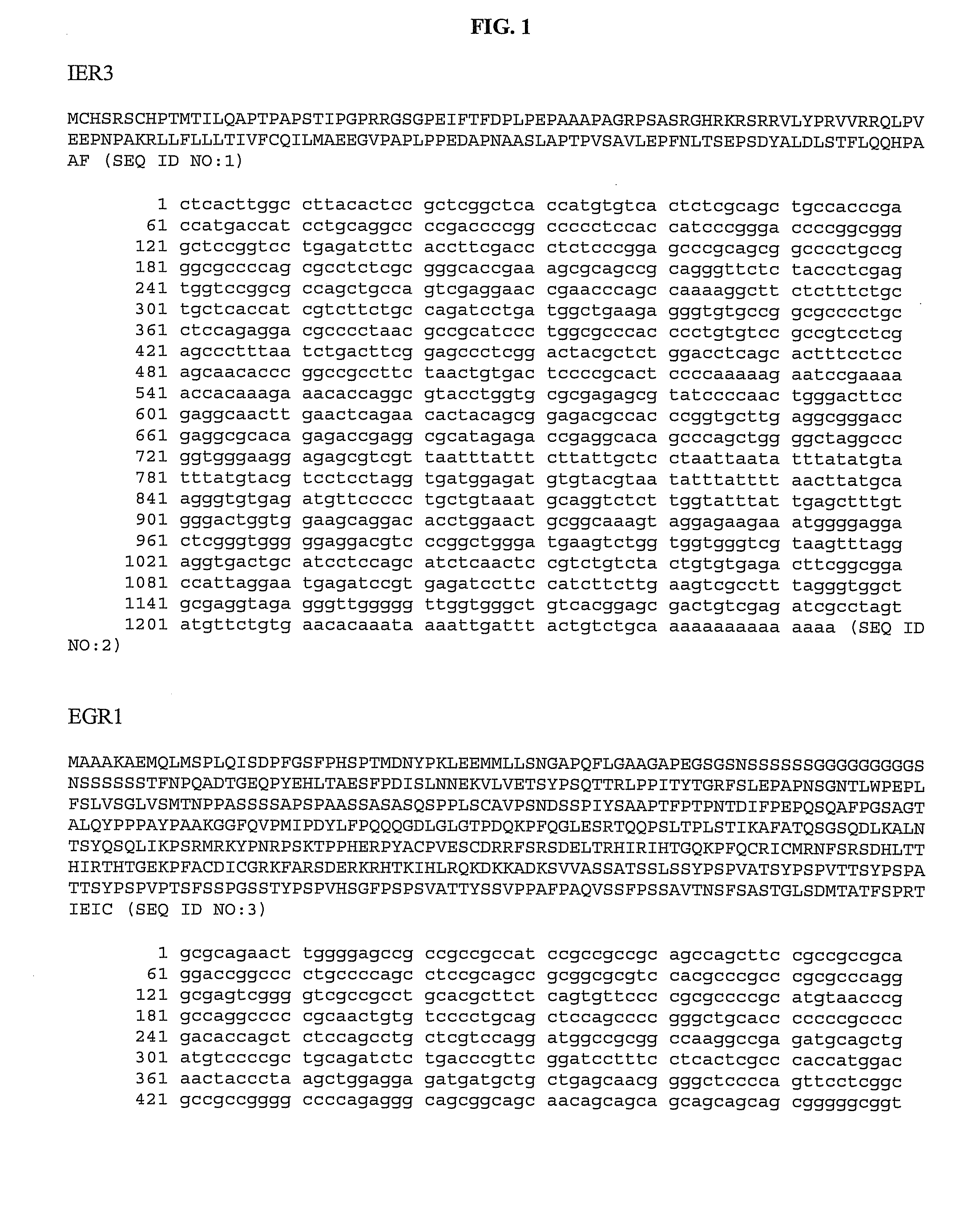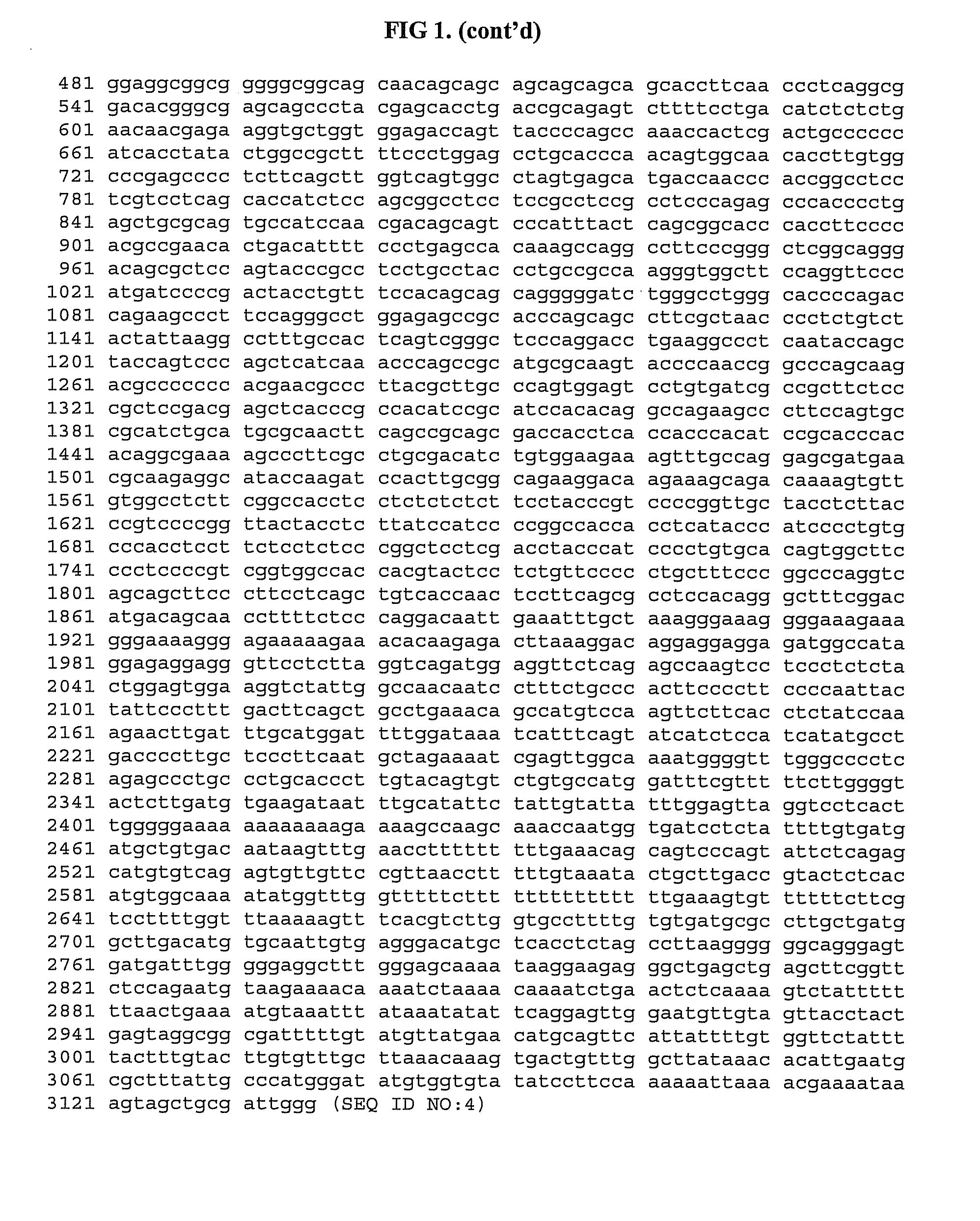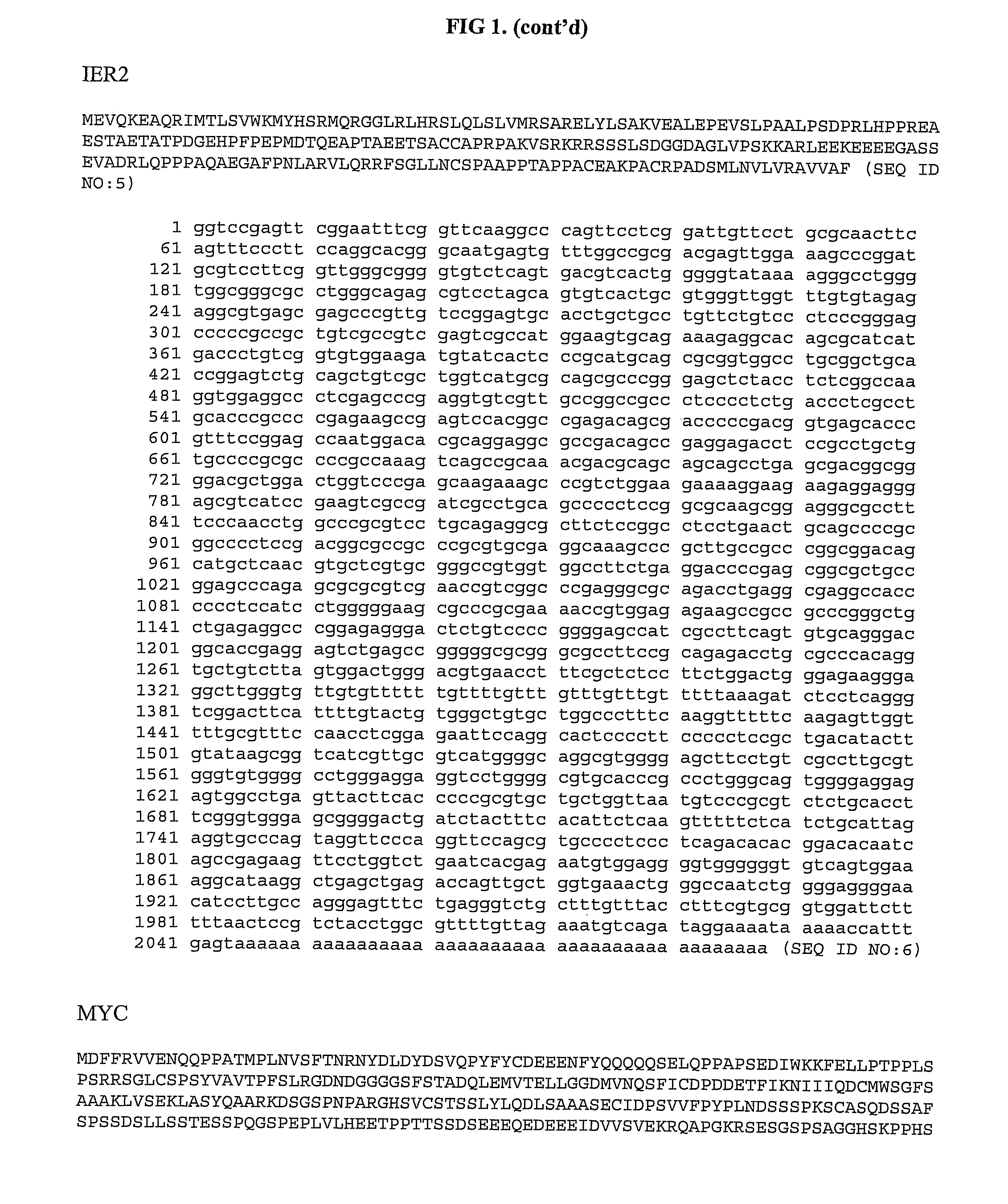Biomarkers for cancer treatment
a cancer and biomarker technology, applied in the field of biomarkers for cancer treatment, can solve problems such as difficult diagnosis and treatmen
- Summary
- Abstract
- Description
- Claims
- Application Information
AI Technical Summary
Benefits of technology
Problems solved by technology
Method used
Image
Examples
example 1
Response of BRAF Mutant and Wild Type Cell Lines to MEK Inhibitor
[0134]Tumors with high MAPK activity due to activating BRAF mutations demonstrate sensitivity to pharmacologic inhibition by MEK (Solit, et al. Nature. January 19; 439(7074):358-62). Eleven cells lines, including five BRAF mutants, are characterized by their tissue of lineage and mechanism of MAPK activation, were used for the experiments described herein, and are listed in Table 2. All the cell lines have high levels of MAPK activity.
[0135]
TABLE 2Characteristics of cell lines used on experimentsAlterationof ReceptorCell lineTissue of originBRAF statustyrosine kinaseSkMel 1MelanomaV600ESkMel 5MelanomaV600ESkMel 19MelanomaV600ESkMel 28MelanomaV600EMALME 3MMelanomaV600EColo205Colorectal carcinomaV600EHT29Colorectal carcinomaV600ESkMel 31MelanomaWTIncrease in copynumber of EGFRBT474Breast cancerWTHER2 amplificationSkBr3Breast cancerWTHER2 amplificationMDA-468Breast cancerWTEGFR amplificationA431Squamous cellWTEGFR amplifi...
example 2
Enrichment Significance of Genes Altered in Response to MEK Inhibition as a Function of Time in a MEK Inhibitor Sensitive V600E BRAF Melanoma Cell Line
[0137]SkMel 28 cells (a melanoma cell line with the V600E BRAF mutation) were treated with the MEK inhibitor, PD0325901 (50 nM), for 2, 8, or 24 hours, or no treatment at all (=time 0 hours). Total cellular RNA was analyzed using an Affymetrix U133A 2.0 platform. Pairwise comparisons of gene expression at each individual time point to reference sample (time 0 hours) were performed, and genes were selected using a threshold of two-fold or greater change in either direction. The number of genes changing significantly increased as a function of time following exposure to MEK inhibitor (2 hours—91 genes; 8 hours—327 genes; 24 hours—1191 genes).
[0138]Thus, genes which changed greater than or equal to two-fold in either direction in response to PD0325901 compared to control were identified at three time points following MEK inhibition. All ...
example 3
Determination of Genes Whose Expression Changes in Response to MEK Inhibition in a Panel of Cell Lines with V600E BRAF
[0141]Mean expression of genes was determined for a panel of V600E BRAF cell lines in each of two conditions, MEK-inhibited (PD0325901 50 nM) or DMSO control, both at 8 hours. The panel of V600E BRAF cell lines included 5 melanoma cell lines (SkMel 1, SkMel 5, SkMel 19, SkMel 28, and MALME 3M) and two colorectal carcinoma cell lines (Colo205 and HT29).
[0142]Significance analysis of microarray (SAM) methods were used to determine the significance of difference between the two groups of genes (using a false discovery rate of 9%). 45 probe sets (closed red circles) were identified, representing 35 genes which change significantly in either direction in response to MEK inhibition (FIG. 3A). Of these, 31 genes are downregulated, and 4 genes are upregulated, in response to MEK inhibition. Expression of the genes was also presented as a heatmap representation (FIG. 3B).
[014...
PUM
| Property | Measurement | Unit |
|---|---|---|
| time | aaaaa | aaaaa |
| time | aaaaa | aaaaa |
| time | aaaaa | aaaaa |
Abstract
Description
Claims
Application Information
 Login to View More
Login to View More - R&D
- Intellectual Property
- Life Sciences
- Materials
- Tech Scout
- Unparalleled Data Quality
- Higher Quality Content
- 60% Fewer Hallucinations
Browse by: Latest US Patents, China's latest patents, Technical Efficacy Thesaurus, Application Domain, Technology Topic, Popular Technical Reports.
© 2025 PatSnap. All rights reserved.Legal|Privacy policy|Modern Slavery Act Transparency Statement|Sitemap|About US| Contact US: help@patsnap.com



